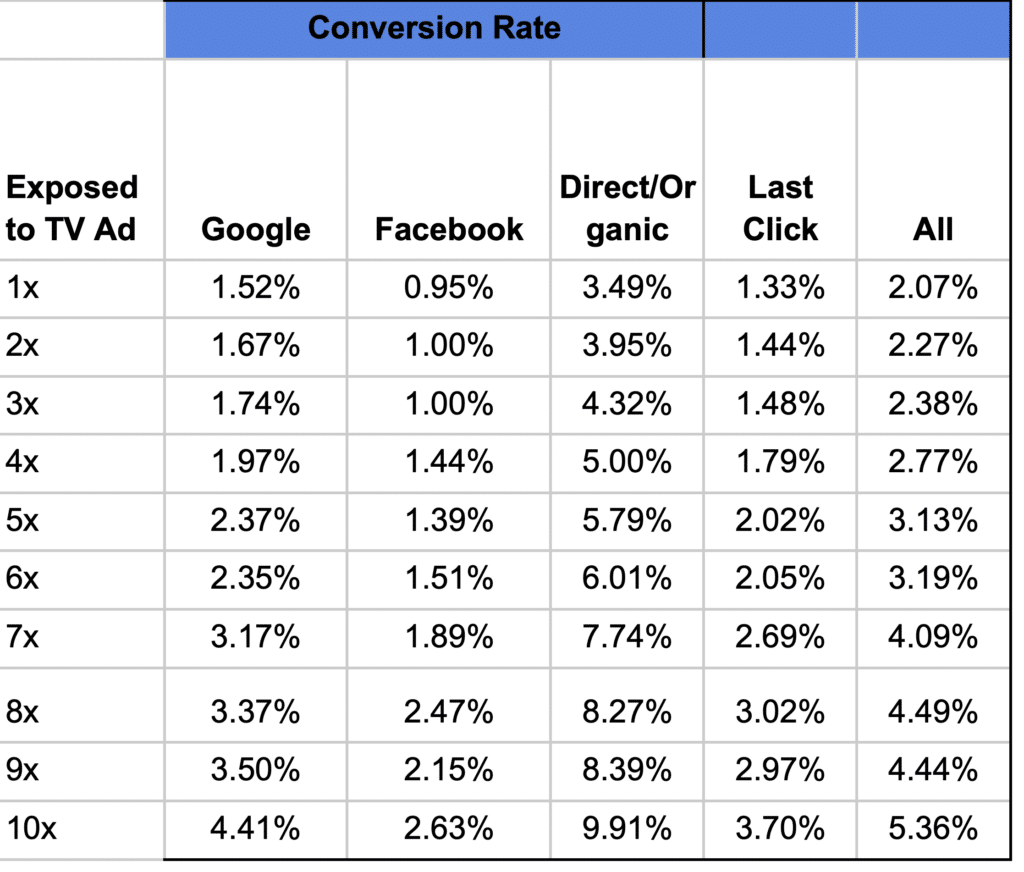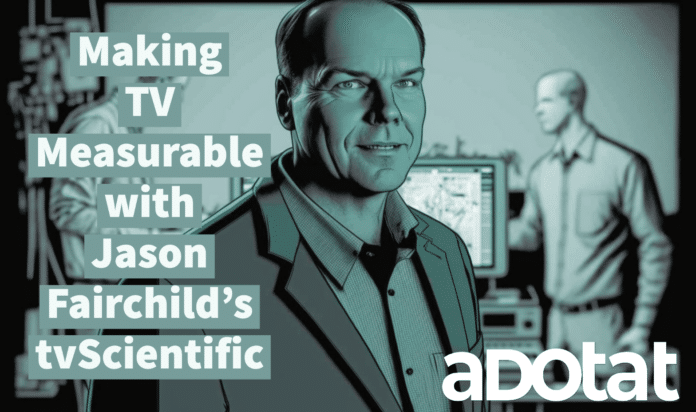Imagine a world where TV advertising was as accessible and measurable as paid search – that’s the world that Jason Fairchild, co-founder and CEO of tvScientific, is helping to create. This former early executive of GoTo.com/Overture (which was later acquired by Yahoo) is a recognized leader in the ad tech industry, with a track record of innovation and growth at the intersection of media and technology.
tvScientific is a Connected TV (CTV) advertising and attribution platform that aims to democratize access to TV advertising and bring digital-like measurement to the table. As the only CTV platform to offer direct media buying with comprehensive measurement and attribution, it’s no surprise that tvScientific is making waves in the industry.
“What if we do for TV what we did for paid search back in 1998?” says Fairchild, explaining the founding thesis of tvScientific. “That is, democratize access to TV via a search-like self-serve platform and introduce digital-like measurement to TV, so marketers could measure the performance of TV ads in the same way as paid search – cost per website visitor, cost per sale, or full ROAS.”
tvScientific’s proprietary attribution platform connects TV ads with business outcomes, such as website visits, sales, app installs, and ROAS, on a 1:1 basis. This is made possible through advanced data science reporting, including incrementality testing and halo analysis. The platform even measures the “Second Screen Response Rate”, which is crucial for understanding the impact of TV advertising on sales and conversions. After all, with 94% of TV viewers having a second screen within arm’s reach while watching TV, it’s important to track the impact of TV advertising on other devices.
But what sets tvScientific apart from other CTV advertising platforms? Fairchild explains that the inspiration for tvScientific stems from his experience developing the paid search business model. “The opportunity to introduce TV – the most powerful medium in the world – to millions of performance-oriented businesses has massive potential to help businesses grow,” says Fairchild.
Again, the company’s platform is designed with the key principle of building marketer trust. Fairchild believes that this is essential for success in the CTV advertising space, as traditional last-click attribution models cannot be applied to TV. To achieve this, tvScientific embraces radical transparency and provides marketers with total control over their campaigns.
One of the key features of tvScientific’s platform is the ability to optimize for ROAS. This means that marketers can quickly adjust their campaigns to drive better results by identifying what is working and what isn’t. The platform uses automation to make these changes, which allows marketers to dial in their desired ROAS within just a few days.
Fairchild explains that the technology behind this optimization process is complex, but the idea is simple – to quickly identify what is driving conversions and adjust the campaign accordingly. By doing this, tvScientific helps performance marketers achieve success with CTV advertising by providing them with the tools they need to effectively reach and engage their target audience.

With a background that includes serving as co-founder and CRO at OpenX, where he helped build and manage business development and sales, leading to over $700 million in annual revenue, and being a board member for Cognitive Networks, a pioneering CTV data company, Fairchild is no stranger to success. He even holds six patents in the areas of behavioral technology and search, with several more pending patents in the areas of audience data aggregation, CTV attribution, and social/influencer commerce. He knows what he is doing, which is why we are listening.
“The first challenge businesses face in the CTV advertising space is the lack of digital-like outcome measurement,” says Fairchild, “The second challenge is the prevalence of false claims made by some companies in the industry, so marketers must take a ‘trust but verify’ approach.”
To address the issue of transparency, Fairchild suggests that businesses should “understand exactly how the CTV partner makes money” and to “mandate 100% transparency into all aspects of the campaign.” He also cautions against falling for “one-size fits all attribution windows” and to “make sure your partner integrates with third-party measurement platforms like Google Analytics.”
In regard to the growing concerns around fraud in CTV advertising, Fairchild emphasizes that it’s important to work with platforms that do not buy open market inventory and apply third-party fraud detection and prevention to 100% of purchased inventory. “At tvScientific, 100% of our buys are 1:1 deals with every major premium CTV pub and we have unique access to NBCU inventory,” says Fairchild.
What about the biggest challenges in measuring CTV audiences and proving ROI? Fairchild states that “the biggest challenge is getting over simplistic last-click attribution methodology.” tvScientific integrates with Google Analytics to provide transparent and ethical reporting, as Fairchild explains, “we inject our impression data into GA such that marketers can sort their last click channels by whether or not they have been previously exposed to a tvScientific TV ad within the defined attribution window. We do not overwrite the actual last click channel or assert that tvScientific is the last click entity.”
In terms of privacy regulations like CCPA and GDPR for CTV measurement, Fairchild assures compliance stating, “We comply with all state and national data laws. CTV does not use cookies. TV is well positioned to thrive in an opt-in environment because consumers opt into ad-supported content viewing, and advertisers gain 100% opt-in from their clients as well.”
Jason Fairchild, with his background in the ad tech industry, co-founded tvScientific to revolutionize the traditional TV advertising industry. tvScientific offers a direct, hands-on solution that combines direct media buying with comprehensive measurement and attribution, making it easy for businesses of all sizes to buy CTV inventory and deliver outcomes that are as measurable as digital ads. The company’s proprietary attribution platform connects the dots between TV ad exposure and site visitations and outcomes, and supports this with advanced data science reporting, including incrementality testing and halo analysis. With its mission to democratize access to TV and make it measurable, tvScientific is set to change the game for CTV advertising.










